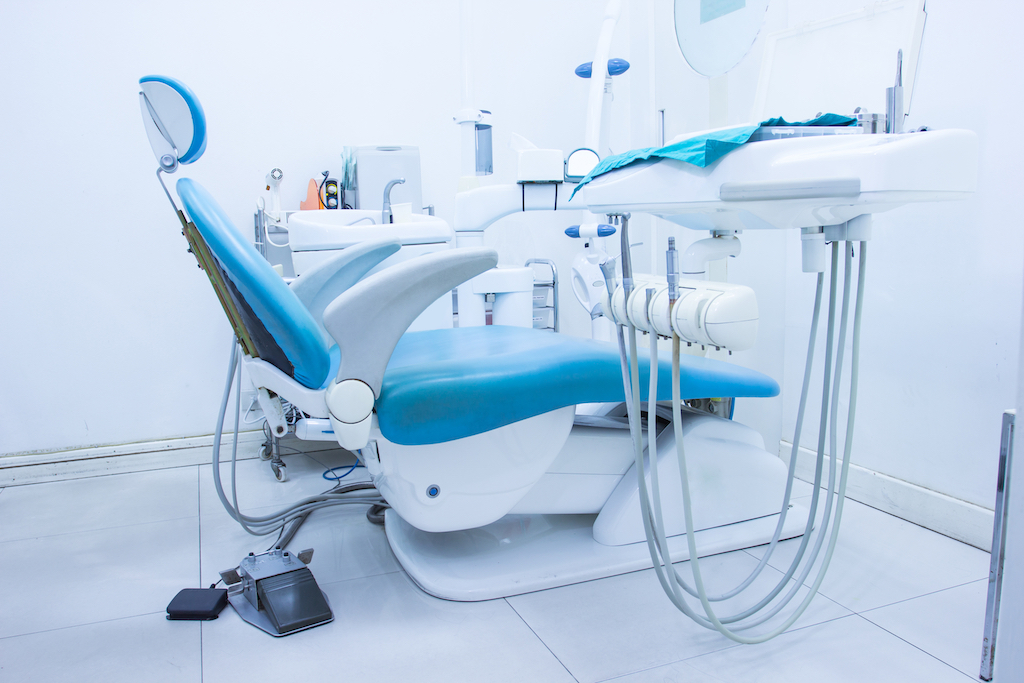Robotics
You might already know about all the different options in dental implants: endosteal implants, subperiosteal implants, all-on-4 dental implants, implant overdentures, and even implant supported bridges. However, what is new and remarkably interesting is the use of robotic-assisted dental implants.
In dentistry, like other industries, robotics can enhance precision, accuracy, workflow, and patient results. For example, even though most patients experience great results from implants, there are risks of nerve damage and implant failure. This is where robotics and navigational surgery technology can improve success rates and guide the surgeon during the procedure by offering enhanced precision and consistency.
According to Kevin E. Hardy DDS, Irish Dental of Hilton Head, “Robots are taking over the world, and dentistry is no different. In dentistry, we talk in millimeters, but robots allow us to operate in miniscule fractions of millimeters. One day it will be nanometers. It really is an incredible development for the profession.”
Intraoral Scanner
If you’ve ever had impressions taken at the dentist, then the chances that you’ve gagged on the goop are certain. The intraoral scanner makes those gag-inducing impressions a thing of the past by simply scanning the patient’s mouth to create a digital impression. It is quick and painless and can assist when it comes to Invisalign or any restorative dental needs. It can even show patients how their teeth will look after treatment with aligners, braces, or whatever restorative dental procedure they may be having.
Digital x-rays
Digital dental x-rays are like traditional film x-rays but expose patients to less radiation. “Digital radiographs provide a drastic reduction in the amount of exposure,” Dr. Hardy said. “In fact, lounging for the day at Coligny Beach results in 10 times more exposure than a modern dental x-ray.” The images also go straight to a computer where they can be instantly examined closely to see areas below and inside the tooth that would otherwise not be visible.
Digital dental x-rays can be taken both inside your mouth, intraoral, or extraoral (outside of your mouth). Intraoral x-rays are performed with a bite-wing x-ray (when you bite down to capture a snapshot of a specific area, which helps identify any decay between teeth or the condition of bone around a tooth—useful before proceeding with a crown or filling) or a periapical x-ray (which shows the entire tooth as well as the bone surrounding the tooth where any abscesses or bone loss caused by gum disease may occur). Extraoral x-rays are panoramic. The machine circles around your head to capture photos of all your teeth, commonly used to assess wisdom teeth, jaw issues, or dental implants.
Cerec One-Visit Crowns
Unlike traditional crowns—which require more than one visit—CEREC one-visit crowns only require one. CEREC (Chairside Economical Restoration of Esthetic Ceramics) one-visit crowns utilize digital impression to create a crown that usually only takes a few hours to make in the office.
“CEREC crowns also have some great benefits,” Dr. Bonnie Rothwell of Rothwell Cosmetic Dentistry on Hilton Head Island said. “For example, they do not have a metal core, which results in a tooth that looks much more natural. Also, they are often typically stronger than traditional crowns. Although the process to bond the crown to the tooth is quite similar, the time usually spent on impressions, trips back and forth, etc. is virtually eliminated.”
Cone Beam Computed Tomography
Becoming mainstream in dental offices are digital x-rays called CBCT (Cone Beam Computed Tomography) scans. These machines operate extra-orally and circle around your head like the panoramic x-ray. The difference is the images produced by these machines are 3-dimensional.
Dr. Rothwell uses this particular type of x-ray in her office. “The 3-D images can be used to map out important nerves when planning extractions or placing implants,” she explained. “We can measure not just the height of bone but also the width and see the proximity of the roots of teeth to the sinuses.”
Dental abscesses can often be detected on the CBCT scan before they would show up on a traditional digital x-ray. The TMJ’s (temporal mandibular joints) can also be viewed in 3D, which is valuable for diagnosing and treating TMJ disorders.
Some of these CBCT machines can link up with the CEREC machines to plan implant placement, the ideal crown and then create a surgical guide. The CEREC unit can mill out a custom surgical guide for the implant surgery as well as the crown once the implant is ready to restore.
Virtual Reality
Virtual Reality (VR) completely closes off the outside world with a dedicated headset and immerses the user in a virtual environment that can transport dental students and aspiring dental surgeons to the OR from their couches and allow dental patients to completely slip away into a calming landscape while experiencing what may be a dreaded dental appointment.
In a live dental procedure, only a few students can peek over the shoulder of the surgeon during an operation. Using virtual reality, surgeons can stream operations globally and allow medical students to be there in the OR using their VR goggles.
On the patient side, VR can be the solution to dentist office anxiety. A recent experiment showed that VR was an effective distraction tool. Patients wore goggles that displayed calming natural scenes and remembered the treatments more positively afterwards.
Teledentistry
Many people are reluctant to go to the dentist. Others have special needs or are residents of assisted living facilities. Distance is another issue for people who live in rural areas. Teledentistry can provide easier access to oral and dental care and is significantly cheaper for patients. Some services offer an all-in-one platform allowing patients to capture images, send relevant information to a dentist remotely, and do a live consult. During the current pandemic, remote care’s importance has risen, and teledentistry has also gained momentum.
“The utilization of teledentistry is definitely a work in progress,” Dr. Hardy said. “At Irish Dental, although we remained open throughout the pandemic due to a severe need for dental care in the area, we additionally helped lots of patients via Zoom communications for those with dental concerns. We realize that even though someone may not be in physical pain, their dental issues may be causing anxiety, so just being able to talk to their dentist is helpful.”
New Dental Technology
Like all technology, dental technology is advancing rapidly, so as a patient, it is important to find a dental professional whom you not only trust to give you the best care, but who can offer you the state-of-the-art dental technology as part of the process.
“There are a lot of new and fancy tools that make the technical aspect of our profession so much easier, allowing us to increase our patient-first focus, which is a primary goal for everyone that visits our practice,” Dr. Hardy said.
Stay informed on what dental trends are available and ask questions to make sure you understand the pros and cons of all dental procedures and the options you have when it comes to routine cleanings, dental implants, orthodontia, and more.



